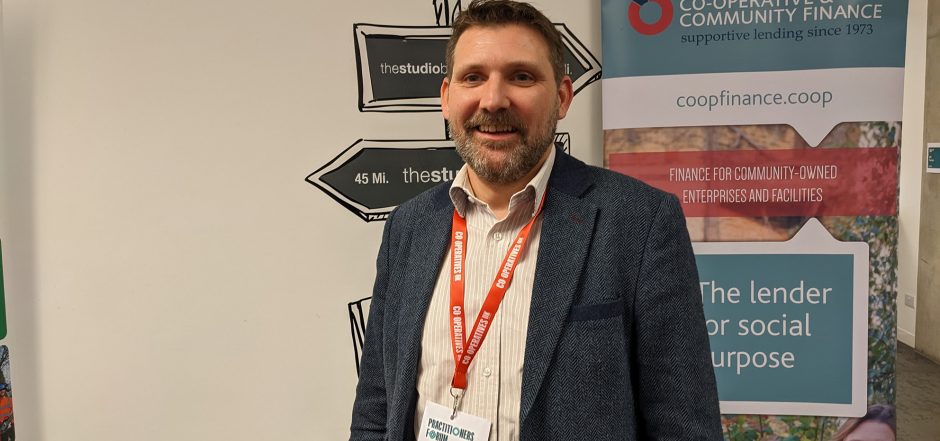One of the benefits of being a co-op is having a membership, and often a wider surrounding community, backing you.
This is something co-ops often use to their advantage through crowdfunding, which can be used to support them during their start-up phases, launch new services or products, or expand capacity.
Sadly, over the past year there have been a number of cases where co-ops had to turn to crowdfunding to plug gaps in their finances caused by the economic crisis. These efforts have brought mixed results.
Vegan grocery Rice Up Wholefoods ran a crowdfunding campaign when its costs became unmanageable last year, but despite raising over £10,000 from 530 donors, it was only a little over half of what it needed to survive and it was forced to close.
A similar story occurred with co-operative community hub Bread + Roses, which managed to raise over £30,000 last summer from 233 supporters and match funding from Power to Change and The National Emergencies Trust, but still had to close in November.
The Solidarity Economy Association (SEA), is currently crowdfunding for £18,000 to cover staffing costs in 2023 – but despite having extended the length of the campaign it is still some way off its target.
Worker-owned queer club and community space in Glasgow Bonjour announced an emergency fundraiser last year in response to rising energy bills and staffing costs, alongside a raft of other measures including cutting opening hours and increasing prices.
Related: £2.2m fund launched to support community businesses across the UK
Organisations that support co-operatives are reporting increased vulnerability in their client businesses.
Chris Cowcher of the Plunkett Foundation, which supports rural community businesses, says the sector is facing its biggest crisis in recent times. Plunkett’s research shows that as many as one in five businesses are vulnerable as a result of the UK’s mounting financial pressures.
“Groups are fighting on multiple fronts,” says Cowcher. “Fatigued volunteers, diminished reserves, dealing with the governance of running an organisation, responding to local residents and having to try and plan ahead to make sure the shop’s still viable next winter.”
Another apex, Social Enterprise UK (SEUK), warns of “significant closure rates” among social enterprises, particularly in the last three months, estimating that as many as 10,000 social enterprises are at risk of closure.
“We’ve definitely seen a drop in cash flow and reserve positions,” says SEUK’s director of research Emily Darko, who helps track the sector’s finances through a quarterly survey.
Darko points to recent responses to these surveys which show that social enterprises’ “vulnerability is increasing and people are draining their reserves in order to hang on”.
“We’re seeing a mixture of things happening,” she explains, “and some of it is quite similar to what we saw during Covid.
“But the overall sense that we have is that this is quite a bit more acute. We’re aware anecdotally that a significant number of social enterprises have already gone to the wall, and several more are pretty close to the edge.”
Tim Coomer, business development manager at Co-operative and Community Finance (CCF) says that when Covid broke out, CCF went into “protect the portfolio” mode. “We were doing less lending but we wanted to be able
to support our borrowers in the portfolio more, so we’ve certainly been doing a bit more intensive support.”

During this time, co-ops and community businesses had to get creative with their finances to stay afloat, using a variety of survival tactics.
While the kinds of emergency fundraisers mentioned earlier do crop up from time to time, Darko says there has not been a surge in this activity among the social enterprises SEUK works with.
“It definitely isn’t a primary solution for the challenges that people are facing at the moment, from what I’ve seen,” she adds.
A possible reason for this is that would-be donors are also feeling the effects of the economic crisis, so are less able to give, making crowdfunding a less viable form of fundraising.
But if crowdfunding is less of an option in times of crisis, what are the alternatives?
“In terms of what those who are close to the edge are doing, it’s a mixture of things. We’ve seen quite a lot of talk about reducing overheads,” says Darko.
“We’ve seen social enterprises looking to absolutely pare back on what they need to spend on, getting rid of any non essential spends, looking at their supply chains and thinking about where they can cut costs.”
Cowcher also speaks of community businesses “cutting their cloth”. Plunkett is supporting its members through this process when needed – offering services like its free online business appraisal tool, and in-person health checks from business advisors.
“We’re seeing people making very simple but quite effective changes,” says Cowcher, “like turning off chillers in shops – working out that it’s costing more to run a chiller than to actually stock it and sell the products that are in it. So people are becoming more acutely aware of the margins of their business operation.”
This kind of cost cutting might mean reducing services or opening hours, says Cowcher. “That has its knock on effect because it reduces the social impact, because then less people are able to access the services that are available.”
Darko explains that while some are reducing staff, this isn’t often a primary go-to for social enterprises. “Mainstream traditional businesses are more likely to shed staff when they’re reaching financial difficulty, social enterprises don’t. They tend to try and retain staff. We’ve seen staff hours being cut and things like that, and ‘natural attrition’ – staff not being replaced when people leave. We’ve also seen social enterprises increasing wages and providing non-financial support to struggling staff, including support with food.”

Both Plunkett and SEUK highlighted pivoting as another key survival method for community businesses and social enterprises.
Cowcher gave a number of examples of community businesses that have pivoted towards the needs of their communities in recent months. Broughton Village Store in South Lanarkshire, Scotland, has started a welfare scheme to enable those who are struggling to access a fund which has been donated to by the local community to help pay for weekly groceries and shops.
“They’re retaining their customer base,” he says, “but they’re making sure the crisis is being shouldered by those with the broadest shoulders and that they are able to help those that are more vulnerable.”
Meanwhile, the Blue Bell community pub in Stoke Ferry, Norfolk, is providing a warm place where people can enjoy a hot meal and a bottomless pot of tea for £4, and Yr Heliwr pub in Nefyn, Wales, has been running ‘Family Kitchens’ providing pay-as-you-feel meals, with proceeds going to local food banks.
“Those are just three very small examples of community businesses that are – because of being rooted in their community, knowing their customer base, and knowing who their vulnerable people are in their locality – making sure that they are responding to this moment,” says Cowcher.
Another option for raising funds is community shares, a form of equity that is only available to co-operative and community benefit societies.
People in communities can become investors in a community business by buying shares, which makes them co-owners and gives them a say in how the business is run.
Cowcher describes community shares as an “absolutely integral” part of the community ownership model that Plunkett promotes.
“At the early stages, we use community shares as a way of building a mass membership, that kind of wide and inclusive model of bringing people in from across the community,” he says. “But also, there’s a significant and longstanding track record of community groups raising significant capital towards community projects.”
He adds: “If you’ve got a changing demographic in a community – there’s a new housing development or new residents have moved in – there’s a new opportunity to bring in some money but also bring in new members to support the society’s activities.
“So community shares still remains a very, very powerful resource, and over a long period of time has proven very successful.”
According to a recent report from Co-operatives UK, to date, 130,000 people have invested £210m in 539 community businesses and organisations through 709 share offers.

Rose Marley, CEO of Co-operatives UK, describes community shares as “enabling communities in innovative and life-changing ways while ensuring that ownership and control of these community businesses stays with the people they matter to the most. “It’s like crowdfunding but you get to become an owner too.”
John Dawson, head of market development at Co-operatives UK, echoed this point, saying that with community shares, “you’re becoming a member of the society and you’re building in that user base. Whereas through crowdfunding, it’s a bit more of a transactional relationship that doesn’t necessarily continue onwards.”
Community share offers also tend to be more planned out than emergency crowdfunders, often coming with a business plan, detailed projection, share offer document and set proposal to raise money over the long term.
According to the Co-operatives UK report, 92% of businesses that have run community share offers are still trading, a figure that has not changed since 2020.
Although crowdfunding can be a good way to inject some cash into a co-op in the short term, withstanding a serious period of crisis may require the kinds of activities that increase resilience overall.
Co-ops are still a particularly resilient model, and were found to be four times less likely to go bust during 2020.
Coomer points to membership as one of the key factors here, saying that with co-ops, and especially community businesses, “it’s a much wider pool you can go out to.
“I think it’s where co-ops have managed to grow their membership and keep growing their membership that are probably the ones that have been and will be most resilient.”